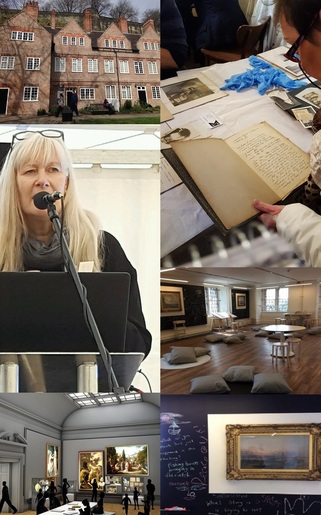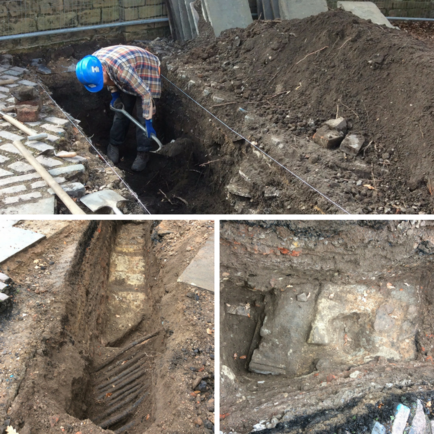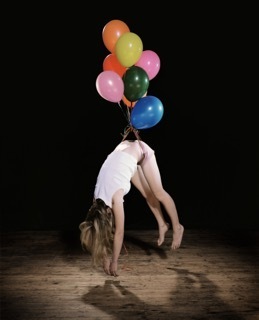 Project update - March
Here is the project news for March.
Brewhouse Yard repairs - As featured in a previous newsletter, Brewhouse
Yard Cottages have recently undergone repair work including roof repairs,
re-pointing, and repairs to window casements and gutters. We are pleased to
announce that this work has now been completed, and the scaffolding has been
taken down. The cottages now look fantastic and we can rest assured that the
improvements made will contribute to the longevity of the building and the
collections contained therein.
Historic England Conference - Earlier in the month, Programme Manager - Cal
Warren was invited to speak at the Historic England ‘Place branding, pride and
prosperity’ conference, which was held at the University of Leicester. The
Castle Project was featured as a case study, and was able to illustrate the potential
impact of heritage projects on the surrounding locality. This was a great
opportunity to raise the profile of the project and meet with others embarking
on similar projects throughout the East Midlands.
Student workshop - During March, project exhibition designers Casson
Mann participated in a ‘meet the designers’ workshop for students from New
College Nottingham. As part of their work on the Castle’s new Project Lab theme
‘Faces’, students enjoyed quizzing designers on the theme of portraiture and
gained inspiration for their future work.
Photography - Our project photography team has been hard at
work during March finishing off the last of the object photography. Based
mostly at Newstead Abbey (home of the Nottingham City Museums and Galleries Costume and Textile collection), the
three strong team has been photographing and measuring objects selected for
display at the Castle. These images will be passed over to Casson Mann for
spatial planning and 3D modelling of our exciting new exhibitions.
|
 Nottingham Castle purchases Luddite
sword at auction
Nottingham City Council’s Museums and Galleries Service has
successfully secured an important artefact from the history of Nottingham after
a bid at auction was accepted last week. The purchase was made possible with
donations from the Nottingham Civic Society and Nottingham Castle Trust.
The relic, known as John Blackburn’s sabre, resonates with
events that shaped history. Blackburn was one of the ring leaders of a gang of
Nottingham men who carried out one of the most infamous of Luddite attacks.
To read more about the sabre and its history, please visit the Nottingham City Council news page.
Heather Mayfield, Chief Executive of Nottingham Council Trust said; "This sabre is a compelling link to the stories of Luddites
in Nottingham and beyond. We are thrilled that the City has been
successful in purchasing this significant object to be displayed in the
re-developed Nottingham Castle galleries. The stories that we tell are bought
to life by real objects from their day, to have such a rare survivor is very
special, we look forward to seeing it on display soon.
Back to top
|
 Simon is elected to Museums Association Board
The Museums
Association’s (MA) membership has elected three new board members: Simon Brown,
Sue Mackay and Gillian Findlay. They will join the board from 1 April for a
three year term.
The MA is the largest membership organisation in the UK for museum
professionals. The organisation champions the value of museums to society and
supports and develops the people who work in them.
Simon is the curator of social history and world cultures at Nottingham City
Museums and Galleries. He stood for election in order to address the unique
challenges facing local authority museums in England, represent staff below
management level, and campaign to increase representation in the workforce.
Simon said: "I'm thrilled to be joining the Museums Association board, I’m
very grateful to those who voted. This is a fantastic opportunity for
Nottingham and the wider region. I look forward to getting started, and
representing our interests on a national level.”
Read more about the Museums Association
Back to top
|
Scott's Findings
Welcome to the thirteenth column from City Archaeologist, Scott Lomax. This month, he explores the excavations currently taking place at the Gatehouse.
"Visitors to Nottingham Castle in the past few weeks may have
noticed excavation work being undertaken at the bridge leading to the
gatehouse."
What work has been undertaken?
"Two trenches, each measuring 1m in width and up to 7m in
length, and a small test pit, have been excavated by Trent and Peak
Archaeology. The reason for the excavation was to better understand the
construction of the bridge, to establish at what depth historical elements of
the bridge exist and to what extent it has been altered during the 19th and
20th centuries."
What will this tell us?
"This will help us to ensure that the historic fabric of the
bridge is fully protected during any future maintenance works. As part of the
Castle Project the bridge will have structural work and these archaeological
investigations will provide valuable information to ensure this nationally
significant structure is preserved for centuries to come.
The excavations have revealed, beneath modern surfaces, a
number of services including a brick drain of probable early 19th century date.
Importantly, at a depth of approximately 1m, the northern wall of the bridge
has been found. For almost two centuries this wall has been covered and
revealing it enables us to establish how wide the bridge was and gives us more
detail of how it was built and what it was built of."
Back to top
 |
Excavation images
Photo 1: (top) Tom Hooley of Trent
& Peak Archaeology excavating through 19th/20th
century deposits at an early stage of the excavation
Photo 2: (bottom left) One of
the partially excavated trenches over the eastern arch, showing electricity
cables (foreground) and partially exposed probable medieval masonry forming the
13th century bridge structure (centre).
Photo 3: (bottom right) The
northern edge of the bridge, with partially exposed masonry of possible 16th/17th
century date, part of which may date to the time of the construction of the
Ducal Palace in the 1670s. Within this masonry is a re-used window jamb, of
likely 16th century date, which was probably part of the medieval
castle.
Origins of 'Hollows'
"Up until the early 19th century, the bridge, with its two arches, spanned a ditch which ran down Castle Road. The ditch formed the outermost defences of the castle and prevented the castle from being captured during many sieges in the medieval period and during the Civil War. The existence of a ditch here led to Castle Road originally being known as 'Hollows'."
19th Century developments
"During the early 19th century, when Lenton Road was formed, the ditch was filled on the northern side of the bridge and the brick walls, which can still be seen inside both of the bridge arches, were built. At this time the arches were used as cottages and stables."
The Gatehouse
"In 1251 Henry III ordered the Sheriff of Nottingham to build a stone gatehouse and it is likely the bridge was built at the same time. Today, much of the original 13th century structure survives. The easternmost arch (furthest from the gatehouse) is original, though partially modified over the centuries.
The westernmost arch is much more recent, having been built in the 17th century, and certainly replacing an earlier timber draw-bridge. In 1525 it was recorded that the bridge was in ‘great ruyne and decay’. In 1536 it was ordered that a ‘new draw brig made at the entre to the castell'. In 1575 a new timber bridge was built, which was replaced with a complete stone structure at some unknown later date. It is likely it was repaired during works to strengthen the castle in the Civil War and again when the site was developed for the late 17th century Ducal Palace."
Summary
"The excavation has provided important new information about the Castle. Every archaeological investigation at the site enables us to gain another insight into the development of the site over its 950 year history."
Back to top
 Object of the month
What is it? The object we
have chosen is a photograph from our Visual Arts Collection entitled - Escape
Artist (Multicoloured), made
in 2008 by Sam Taylor-Johnson
OBE (formerly known as Sam Taylor-Wood).
Why is it significant? Photography was collected in the early years of the
Museum and Art Gallery from
it being founded in 1878. There was then a long gap, before a renewed focus on collecting
photography from the 1980s to the present day. In 2009 this object by internationally
renowned artist Sam Taylor-Johnson’s was acquired.
Tell me more The photograph
is one of the “Escape Artist” series exploring ideas of weight and gravity.
It shows the artist,
apparently suspended by 8 helium-filled balloons. The bold balloon colours
contrast with the vulnerability of her slumped figure whose face is hidden by her hair and who is
dressed only in pale coloured underwear.
This is a
cibachrome fine art photograph, created by a hand colour printing process which
produces pure, clear images which will not readily fade, discolour or
deteriorate.
In our opinion "We chose this work because
of its immediate visual impact - the colours of course, but also the mysterious
way in which the full weight of the artist’s body is held aloft by a few party
balloons. It gives the whole image a
feeling of both tension and fragility.
"We also wanted
to show the importance of our contemporary ‘art photographs’ collection. Sam Taylor-Johnson studied at
Goldsmiths College in London alongside Jake Chapman, Tracey Emin and Sarah
Lucas and like them made an impact of one of the generation of so-called ‘YBAs’
(‘Young British Artists’) in the early 1990s.
She was nominated for the Turner Prize in 1998 and is known for her
video portrait David (David Beckham
sleeping) for the National Portrait Gallery and her films Nowhere Boy about the early life of John Lennon (2009) and Fifty Shades of Grey (2015)."
Deborah Dean - Visual
Arts Collections and Exhibitions Manager - Nottingham City Council
Escape
Artist (Multicoloured) will feature in the new Art as Inspiration Gallery
currently being designed by exhibition designers Casson Mann.
Back to top
|
 Radio Nottingham Big Day Out - 30 April
Many museums and heritage tourist attractions across Nottinghamshire are offering free entry to their exhibits for the next “Big Day Out" on Sunday 30 April 2017.
This will include the Castle which is open from 10am-5pm - come down and meet the Castle Transformation Team - we are working on some fun activities for all the family to get involved in. We'll keep you posted on those!
The event is a celebration of the county's history and heritage and is organised by BBC Radio Nottingham. Thousands of people took part in last year's event.
A full list of venues taking part in this year's event will be available from mid-April see www.bbc.co.uk/radionottingham for further details or pick one up from the Nottingham Tourism Centre.
Back to top
|
|